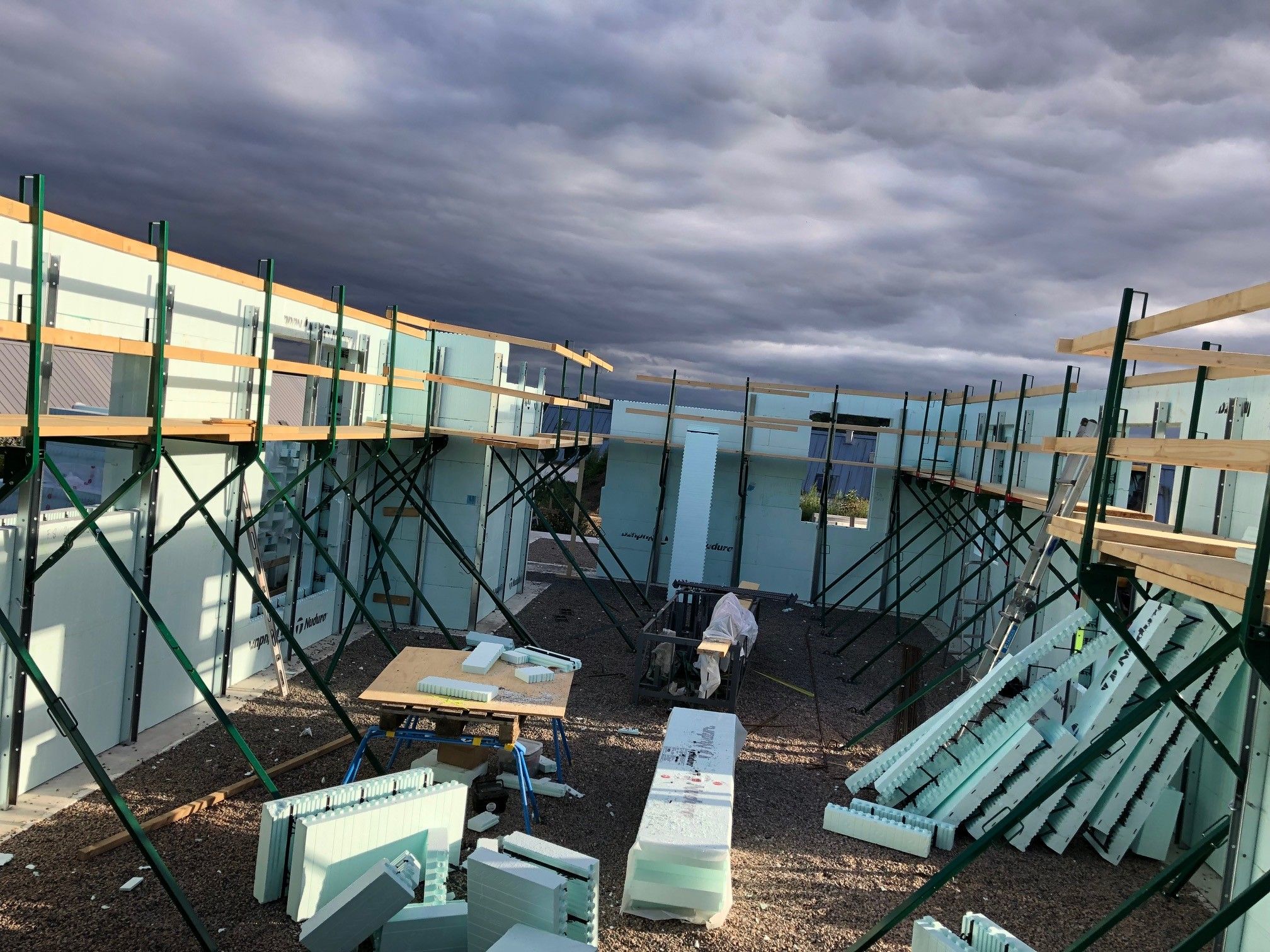The progressive objectives of the RE2020
The stages of the RE2020 regulation: from the energy transition to the environmental transition
- Entered into force on 01/ 01/2022, the RE2020 currently only targets the new construction of individual and collective housing.
- From 2023, it will include the construction of tertiary buildings (offices, education, etc.) and extensions to existing buildings.
- Then, it will go through 3 successive stages of strengthening its requirements, in 2025, 2028 and 2031, with new carbon content thresholds per m² of -15%, -25% and -30% compared to the first phase of application.
GHG emission thresholds for housing:
Source: MTE, February 2021
1st phase
As 60 to 90% of the total carbon impact calculated over a period of 50 years is linked to the demolition/construction phases, this first phase of the regulation (2021-2024) aims to appropriate the dynamic life cycleanalysis method.
The LCA (Life Cycle Assessment) method makes it possible to measure the environmental impacts of products according to ISO 14067. This analysis takes into account all stages of their life cycle, "from cradle to grave", i.e. from the extraction of raw materials necessary for their disposal/recycling at the end of their life.
These environmental impacts of products are quantified and materialized in the FDES (Environmental and Health Declaration Sheet) according to standard NF EN 15804.
In the so-called "static" LCA, based on these standards and used today in Europe for all building materials, all stages of the life cycle have the same weight in the measurement of environmental impacts.
In the E+C- label behind the RE2020, the "Carbon" indicator is also based on an analysis of the static LCA, with a calculation of greenhouse gas emissions, on the one hand on the entire building, and on the other hand on all construction products and equipment, for a lifetime of 50 years.
In the RE2020, on the other hand, it is the principle of simplified dynamic LCA that has been retained, to take into account the kinetics of degradation of greenhouse gases in the atmosphere, always over a period of 50 years.
The FDES of the products are carried out in static LCA, but weighting coefficients will make it possible to assign a greater weight to the emissions at the beginning of the life cycle, compared to those emitted at the end of the life of the building.
Buildings are thus considered as "carbon sinks". Two main reasons motivated this choice:
- The urgency to stop climate change by reducing the amount of greenhouse gases emitted today, so as not to exceed the thresholds of no return of warming (<+2 to +3°C maximum)
Source: MTE February 2021
- Uncertainties about end-of-life scenarios of products, which remain hypothetical and based on our current knowledge.
Wood and bio-based materials, which trap carbon during their growth at the beginning of the life cycle, before releasing it at the end of the life cycle usually by energy recovery, are favored by this calculation method, compared to the use of more traditional materials, such as concrete or metals. But the latter remain essential solutions in some books. On the other hand, the carbon impact of a building is not limited to that of the constituent material of its structure, but also includes those of several dozen other construction products. All industrial sectors are therefore mobilized to optimize the environmental characteristics of materials, develop new innovative, more sustainable & efficient construction methods, and reduce their carbon emissions while saving the planet's resources.










